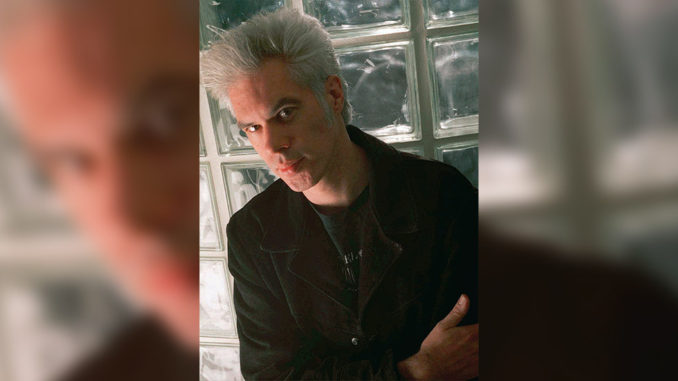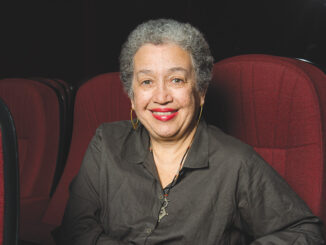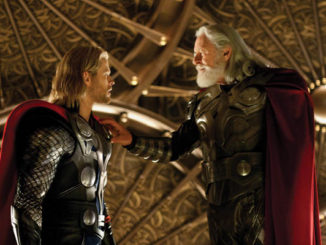
by Rob Feld
On the eve of the opening of his Cannes Film Festival Grand Prix-winning film, Broken Flowers, in the United States, indie icon––and iconoclast––Jim Jarmusch sat down with CineMontage to discuss his long-term collaborative relationship with editor Jay Rabinowitz, their work on the new film and his rather unconventional approach to film editing.
CineMontage: You have worked with Jay Rabinowitz consistently for many years now. Can you tell me about that experience and what he brings to your work?
Jim Jarmusch: I first met Jay in 1985 when he was an apprentice editor on Down by Law. We would talk a lot about music. When we made Mystery Train, he was our assistant editor, and by that point I was like, “This guy’s got to be my editor at some point—I just get along with him so well.” Then he became the editor for Night on Earth [1991], so we’ve been working together a long time now.
CM: What is it that connects the two of you?
JJ: The first thing that connected us was our love for music, and certain areas of music. I use that musical connection in terms of the visual editing of a film. He’s got very musical hands. When Jay refines very delicate cuts, he’s masterful. It’s amazing to watch him finesse cuts and move like liquid. If the camera angles were different, if the actor wasn’t quite in the right position or if the continuity is a little off––Jay is amazing at making that very fluid. He knows ways to make it work that my eye has trouble finding.
“I’m not the easiest person to work with. I have very specific ideas about editing, some of them a little unorthodox.” – Jim Jarmusch
CM: What is your approach to editing?
JJ: I’m not the easiest person to work with. I have very specific ideas about editing, some of them a little unorthodox. I don’t really discuss with Jay my ideas or what I’m doing on set while I’m shooting. He starts in sort of a vacuum until I get to the editing room, and then I’m on his back every day. So it’s definitely a collaboration. I think any good collaboration elevates the work above what either element of the collaboration would do on his own.
I’m very meticulous about what I intended something to be, but I’m also very open. Jay is very patient and meticulous as well, but he likes to try other possibilities to show me. Some-times they’re better than mine and sometimes I stick to the ones we arrived at together, or what I designed initially. We work through it that way and do every cut together. Sometimes, Jay will do an assembly without my notes while I’m shooting, and often we don’t refer to that cut unless we’re stuck or confused in a scene. Then I’ll say “Let’s see what you did before I even started messing around with this.” That sometimes reveals an approach I hadn’t thought of, or that will strengthen what we’ve been doing.
CM: Tell me about the editing of Broken Flowers.
JJ: On Broken Flowers, I wanted to edit it backwards—not cut by cut, but scene by scene; the last scene first, then second to last––because I was building the character Bill Murray inhabits in the film, and I wanted to have a real sense of where he ended up, rather than starting from the beginning. I’d never done that before, so when I walked into the editing room and said, “Jay, I think we should cut this film backwards, he looked at me and thought for a second, then said “Yeah, that’s probably a good approach. I like that.” He’s very open to wacky things.
“Something Jay and I learned together is that you have to let the film tell you what it wants as you cut it.” – Jim Jarmusch
CM: Why do you keep your cards so close to your chest and not communicate with those things beforehand?
JJ: Because I have very short shooting schedules and I just don’t have time. I also don’t like my own mind involved in the next stage when I’m still capturing material. I always think about shooting a film as taking a bunch of people out into a marble quarry and picking out big chunks of rock that you want to sculpt. Say you’re trying to make a sculpture of a horse; so you pull out some big blocks––which is very physical work and takes a lot of people. Then you haul that back to the editing room, which is where the actual film is shaped and made. You sculpt down those pieces of marble and sometimes you find that it’s not a horse, it’s a cow. You have to go with what the film gives you, but I don’t like to get confused while I’m in another realm, shooting. I like to leave it all in my head.
CM: How does that affect your editor?
JJ: Sometimes, poor Jay will try and cut a scene without having spoken to me, and he gets lost. It’s not always that evident what’s in my head—sometimes a scene starts with a close-up instead of a master-shot, which is a little illogical. It’s also valuable to let Jay play with it without any notes from me at all, though. If and when we do refer to whatever cut he made, it may reveal something that I never thought of. It’s kind of rough on him when he’s doing the first assembly without me, but that makes his brain work to figure out what the hell I was thinking about.
CM: When you’re assembling a scene, do you think about rhythm first––or the plot point or the characters?
JJ: I’m sort of strange in that when I shoot a scene; I never think about other scenes in the film. I try to treat each scene as a small film, but I do have specific ideas of how I hope it will go together. Obviously I have a sense of the rhythm and a musical feel of the film as I’m shooting—how it’s going to flow. I don’t know the order of the shots, specifically, but for me, it’s the character.
“I’m very meticulous about what I intended something to be, but I’m also very open. Jay is very patient and meticulous as well.” – Jim Jarmusch
CM: Why do you think so episodically?
JJ: When I was first starting out I was a teaching assistant and gofer for [the filmmaker] Nicholas Ray, one of my heroes. He told me, very early on, “When you shoot a scene, don’t think about the others. Realize that the scene doesn’t mean the same thing to all the actors in it, so speak to each one separately about the meaning of the scene––but think only about that scene while you’re working. If you create solid, beautifully constructed scenes, when you hook them together it will be like a necklace of beads. But don’t think about the whole string of beads, think about each individual one, and craft it as beautifully as you can.” I think a lot of that came from him.
I sometimes like to use fades or blackouts, and give a visual ending to a scene. Ray did that in some of his films, but even when he didn’t, they were separate parts of the overall voyage. He did that beautifully. Another influence for me is music; the way a classical symphony has movements or a pop record has songs.
CM: What have you learned through your collaboration with Jay?
JJ: Something Jay and I learned together is that you have to let the film tell you what it wants as you cut it. If you try to bludgeon it into some prescribed notion of what you want it to be, the film might resist. I learned this very early on when I had a crane shot in a film that took me two days to shoot and cost a lot of money. But the film didn’t want the shot. I remember Jay saying, “I think the film doesn’t want it.” “But I want it!” you know? We tried it with and without and the film didn’t care how long that shot had taken; it didn’t want it.
Ten years ago, Jay and I also learned that when you make big changes to a rough cut, it effects the film in small ways; but when you have a very fine cut and make small changes, it can effect the film in big ways. It’s not really logical but, again, the film tells you what it is. These were revelations that would strike us, as we were growing and learning about filmmaking together.
Jay is just an incredibly valuable collaborator, a wonderful man and a great friend.






